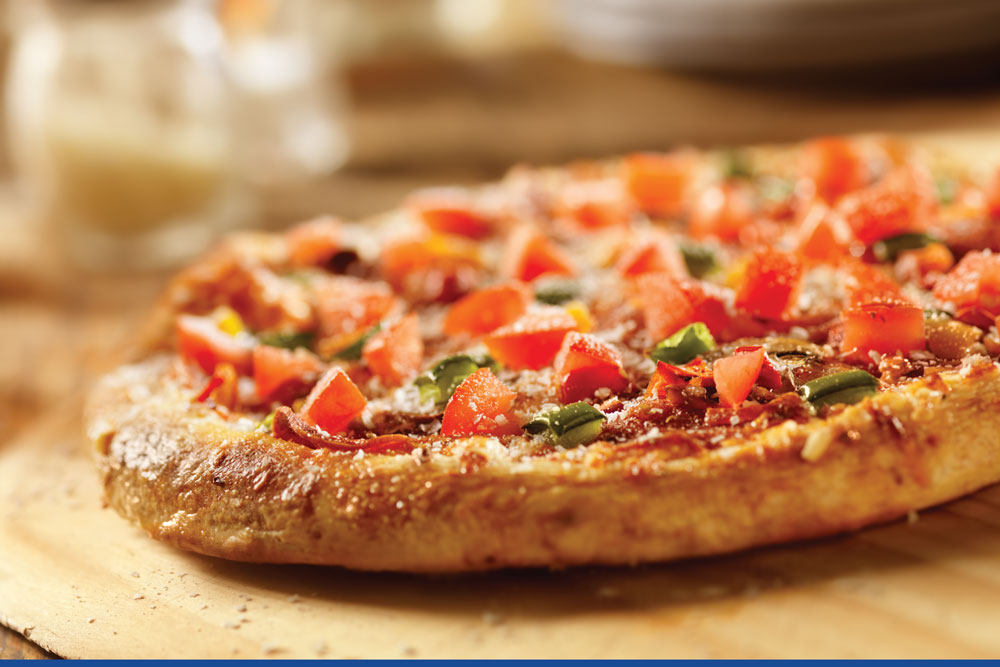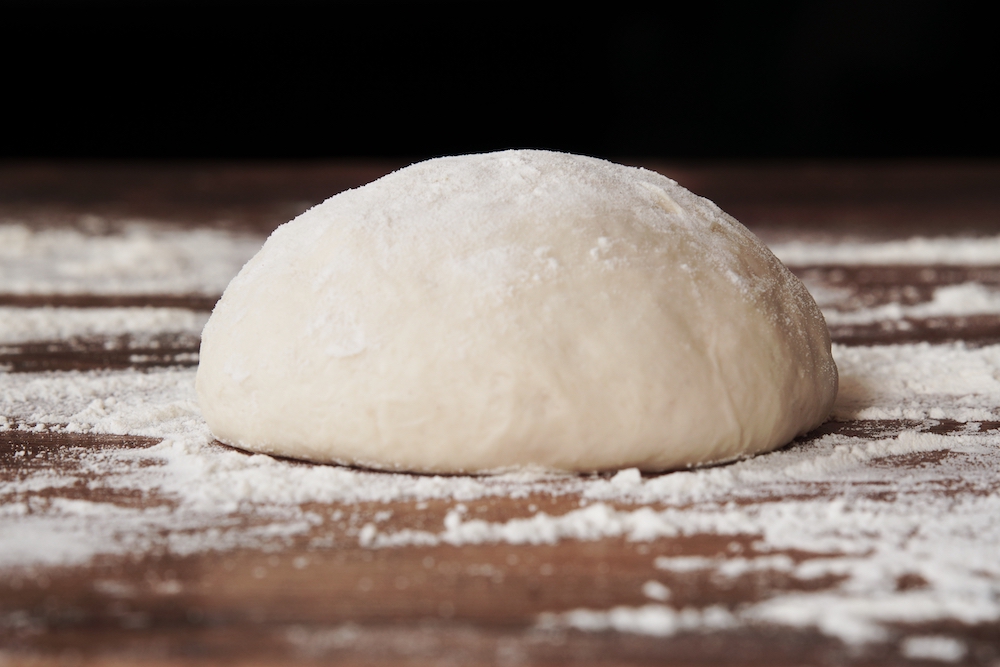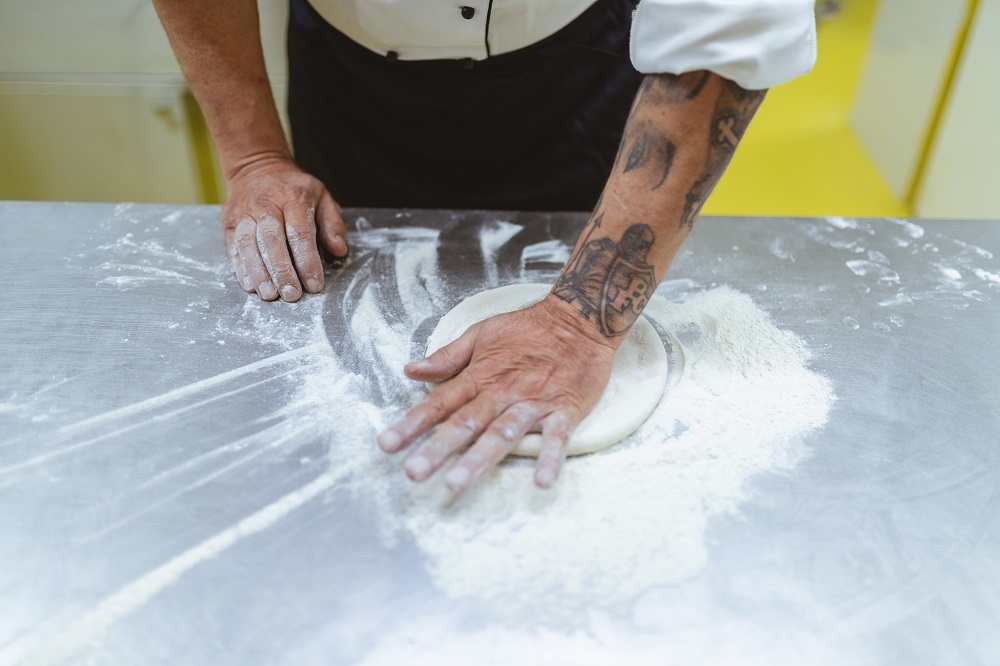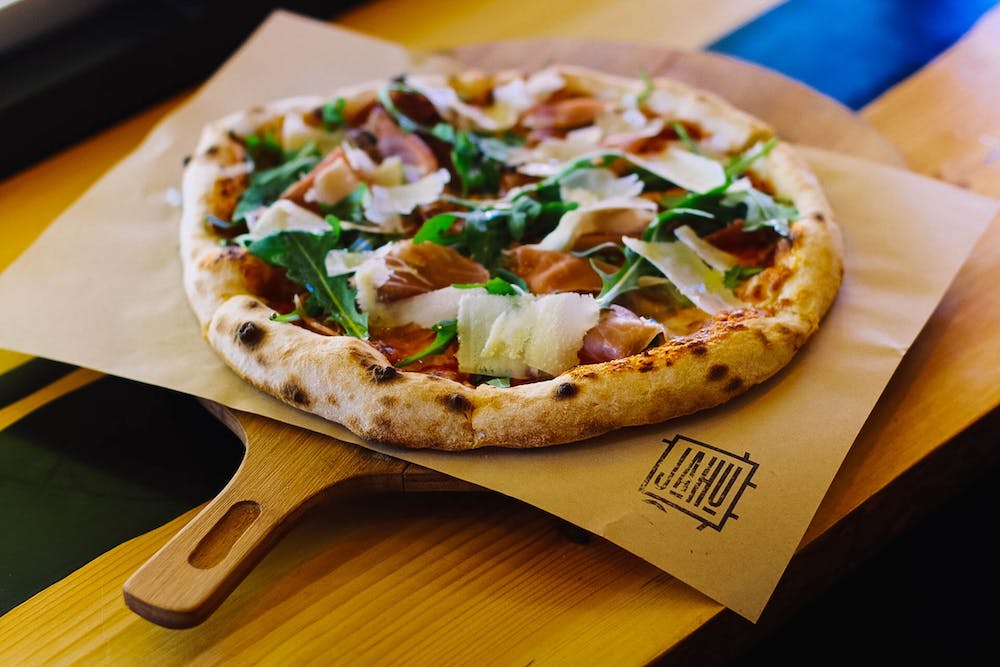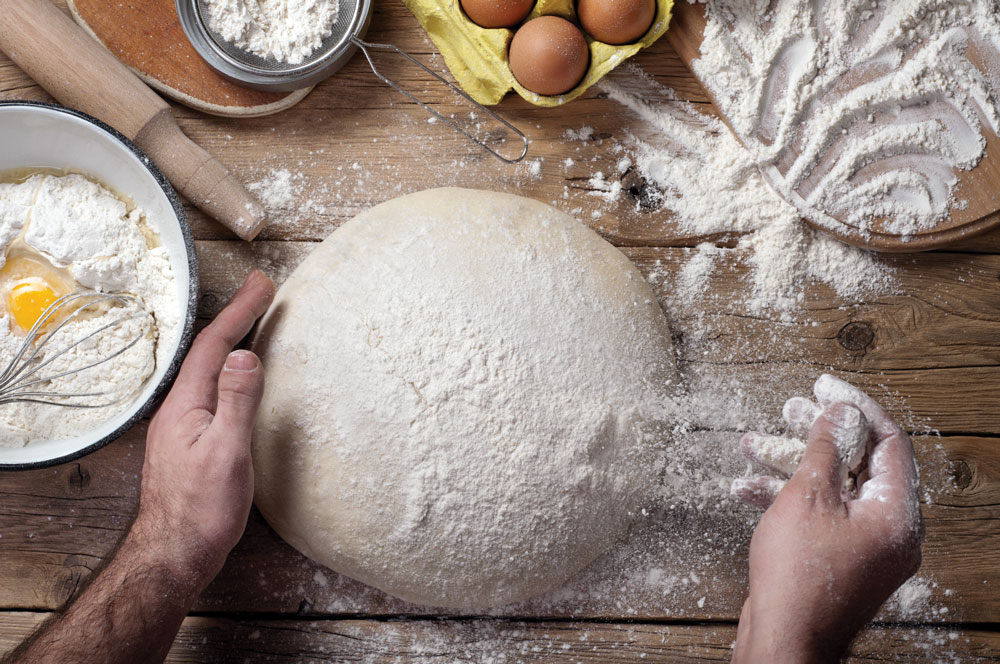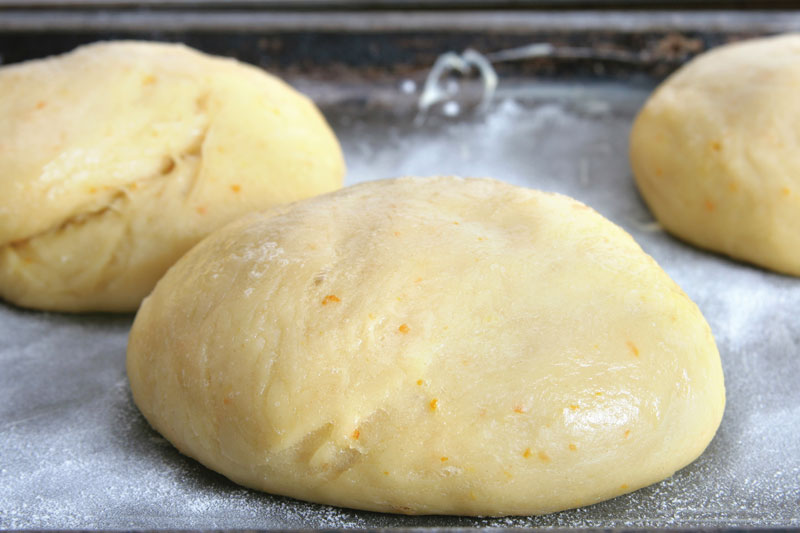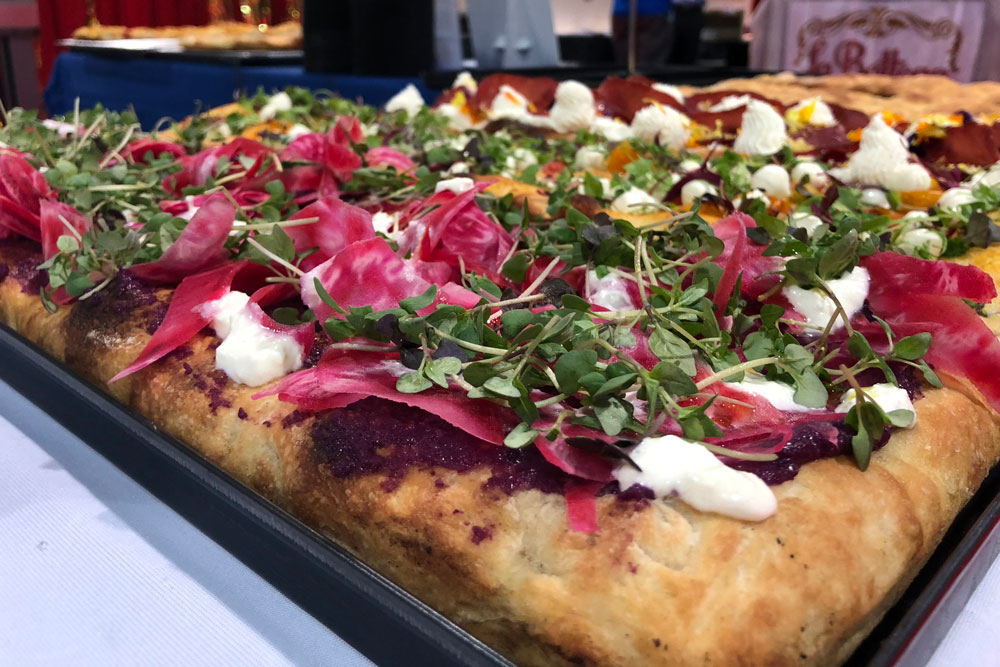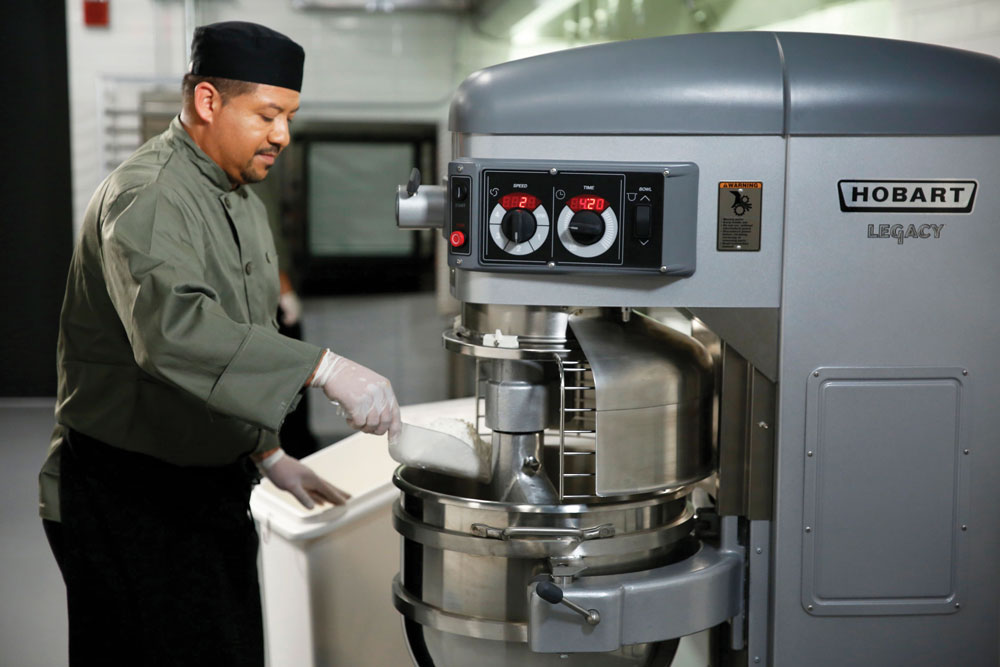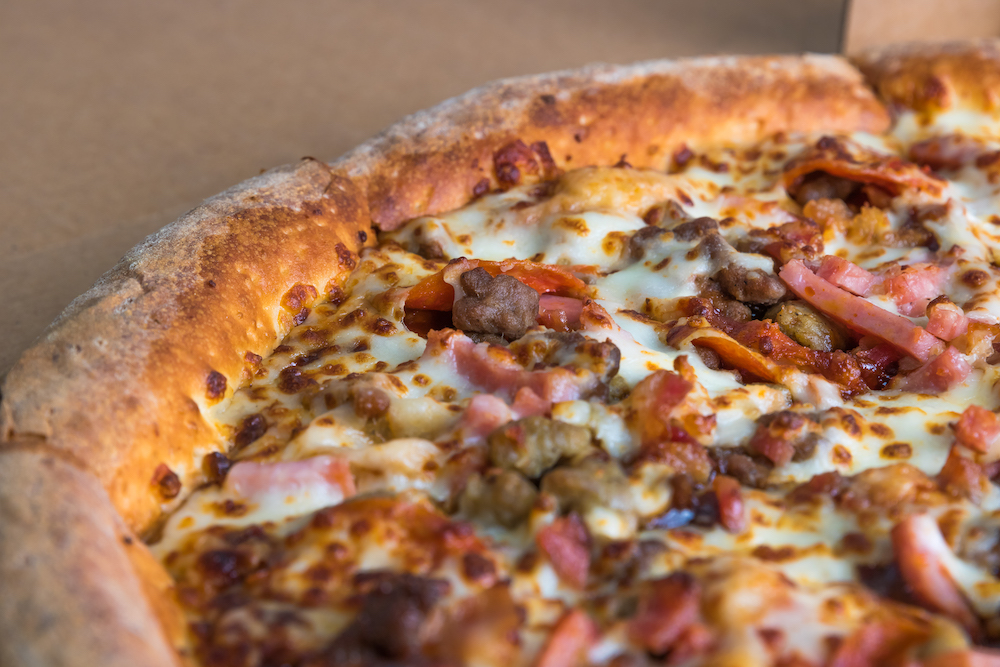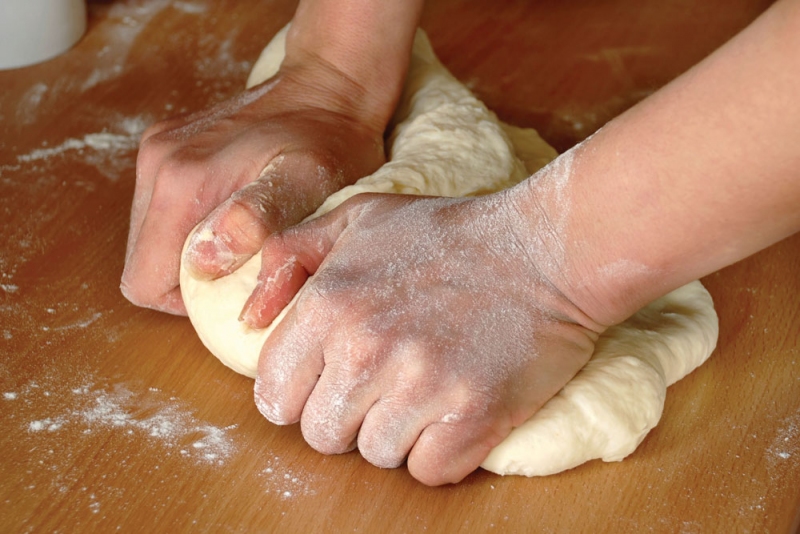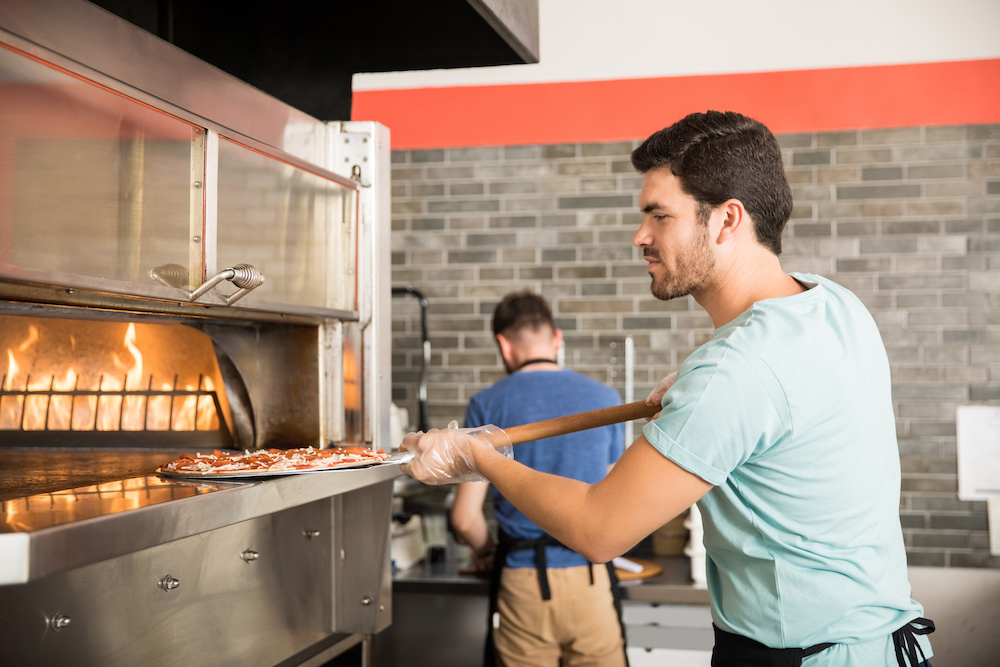We’ve been experimenting with a thicker crust, but so far I don’t really like the dense texture and tougher eating characteristic we’re getting. What’s the secret to a thick-crust pizza with a lighter texture?
When making a thick-crust pizza, you have to allow the dough to proof/rise sufficiently after fitting it to the pan. Failure to do this will typically result in a denser crumb structure with somewhat poorer bake-out properties, yielding a tougher, more chewy finished crust.
Related: How to make Detroit-style pizza dough (with video)
In many cases, you can use the same dough for both thin- and thick-crust pizzas, with the only real difference being the amount of dough used to make the crust. Typically, what we would call a “thick” crust is made with 25% more dough than the amount used for a thin crust of the same size, and the dough is allowed to proof/rise for at least 30 minutes prior to dressing and baking. Proofing the dough before dressing the skin gives the finished crust that open, porous crumb structure you want while improving the overall bake-out properties, resulting in a lighter texture and more tender eating characteristic.
You really don’t need to make changes to your dough formulation for thick-crust pizzas, but you can optimize it if thick-crust pies will be signature items on your menu. To optimize the dough formulation, increase the yeast level to about 1.5% compressed yeast (or the equivalent of active dry yeast or instant dry yeast). Then replace any oil in the dough with some form of plastic fat, such as butter, shortening, margarine or lard. These fats will provide better gas retention in the dough for improved oven spring and a more open crumb structure.
Related: Tom “The Dough Doctor” Lehmann explains the new Ceresota pizza flours
This approach also may lead to different flavors, depending on the plastic fat you choose. The amount of plastic fat to use in a thick-crust dough formulation will depend on the desired finished-crust characteristics. In general, 2% fat is considered the minimum when formulating dough for thick crusts, with 4% to 6% providing excellent flavor and eating properties. Even 8% to 12% is not uncommon, especially with dough being formulated for pan-style pizzas.
Meanwhile, if your pizzas have a lighter crust color, you may also want to consider adding some sugar to the dough formula; you’ll get a darker crust without the need to overbake the pizzas. Many thick-crust dough formulas are made with 2% to 4% sugar as well as non-diastatic malt powder, which provides for a unique background flavor. Just remember that, since a thick-crust pizza requires more dough, the finished crust has to be flavorful. And you don’t want it come out too dry, either, which can detract from the overall quality of the pizza. This is where the higher fat levels come into play; they will effectively impart a more moist (or less dry) mouthfeel to the finished crust while making the crust more tender, too.
Related: How to achieve a better par-baked pizza crust
Finally, thick-crust pizza dough formulas also work quite well for calzones. The richer, more tender crust adds a lot of appeal to the overall quality of the calzones, making them stand out from “just another form of pizza.” When making calzones from this type of dough, I like to brush the calzone with melted butter and sprinkle it with shredded Parmesan cheese just before baking. Then I’ll give it a quick spray of garlic-flavored butter oil and a sprinkling of Italian herbs with a powdered Parmesan-Romano cheese blend immediately upon removal from the oven. Serve it with a side dish of marinara sauce or ranch-dill dressing for dipping!
Tom Lehmann was the longtime director of bakery assistance for the American Institute of Baking and is now a pizza industry consultant.



